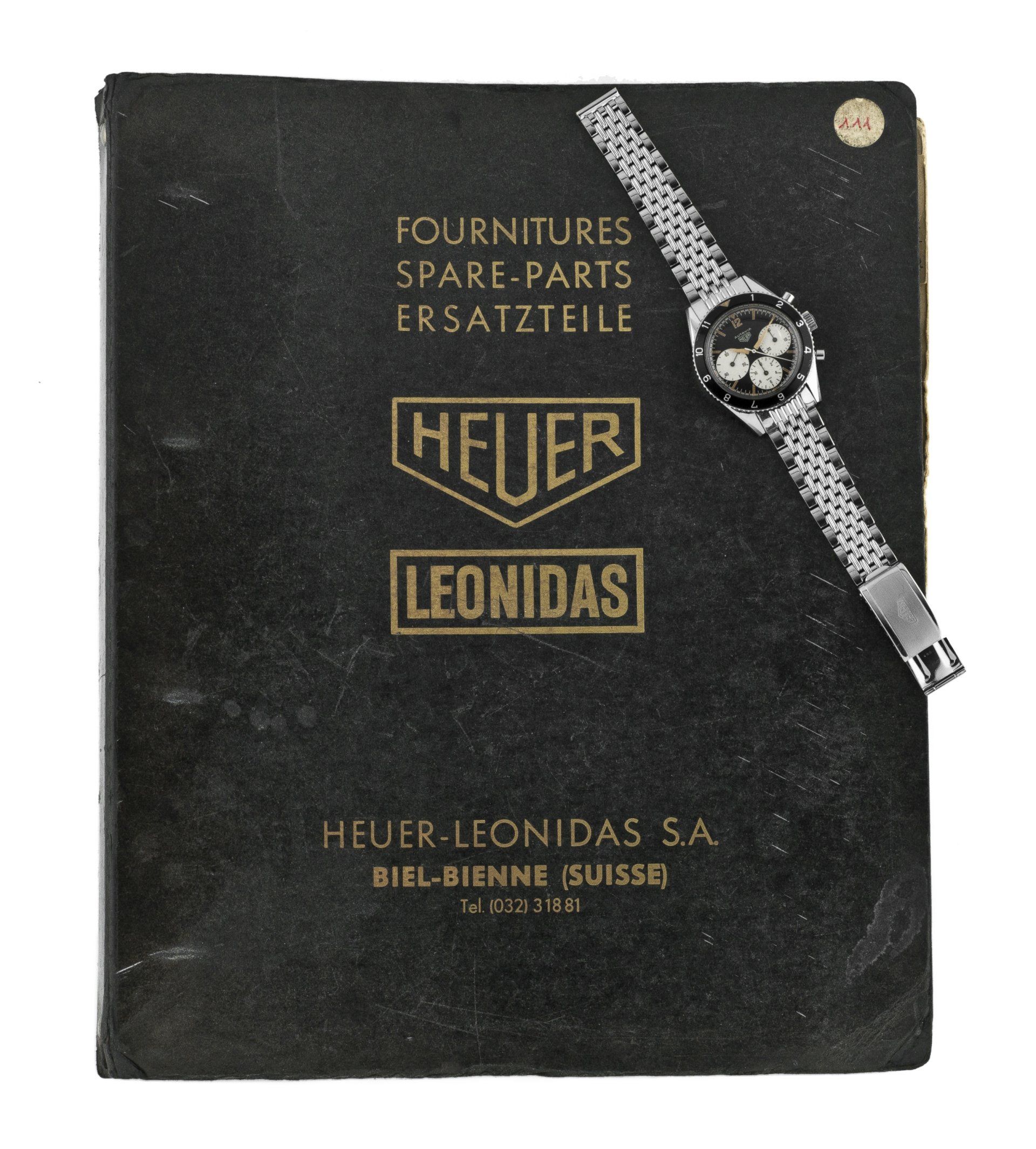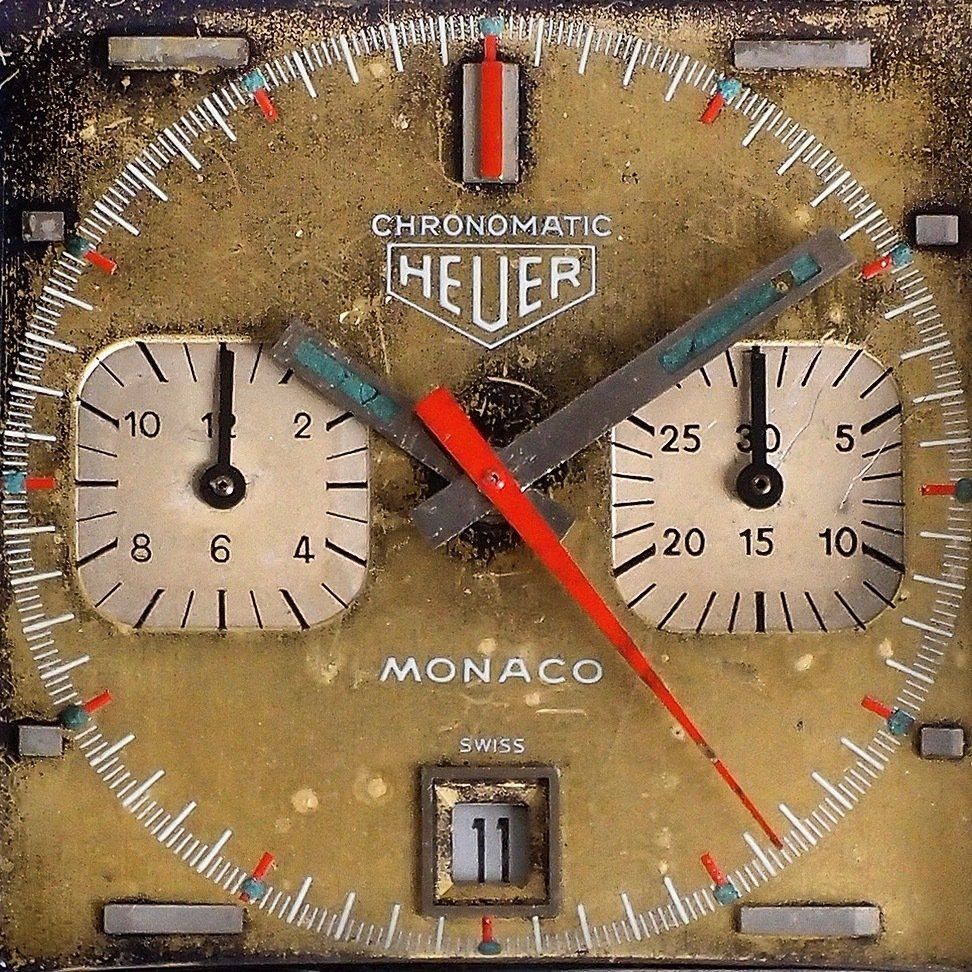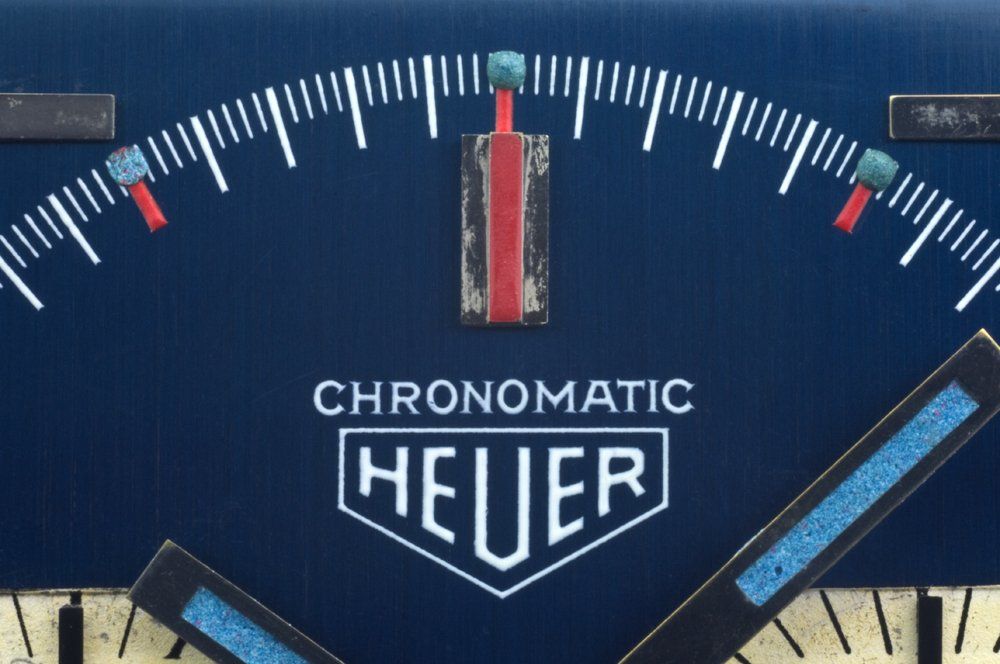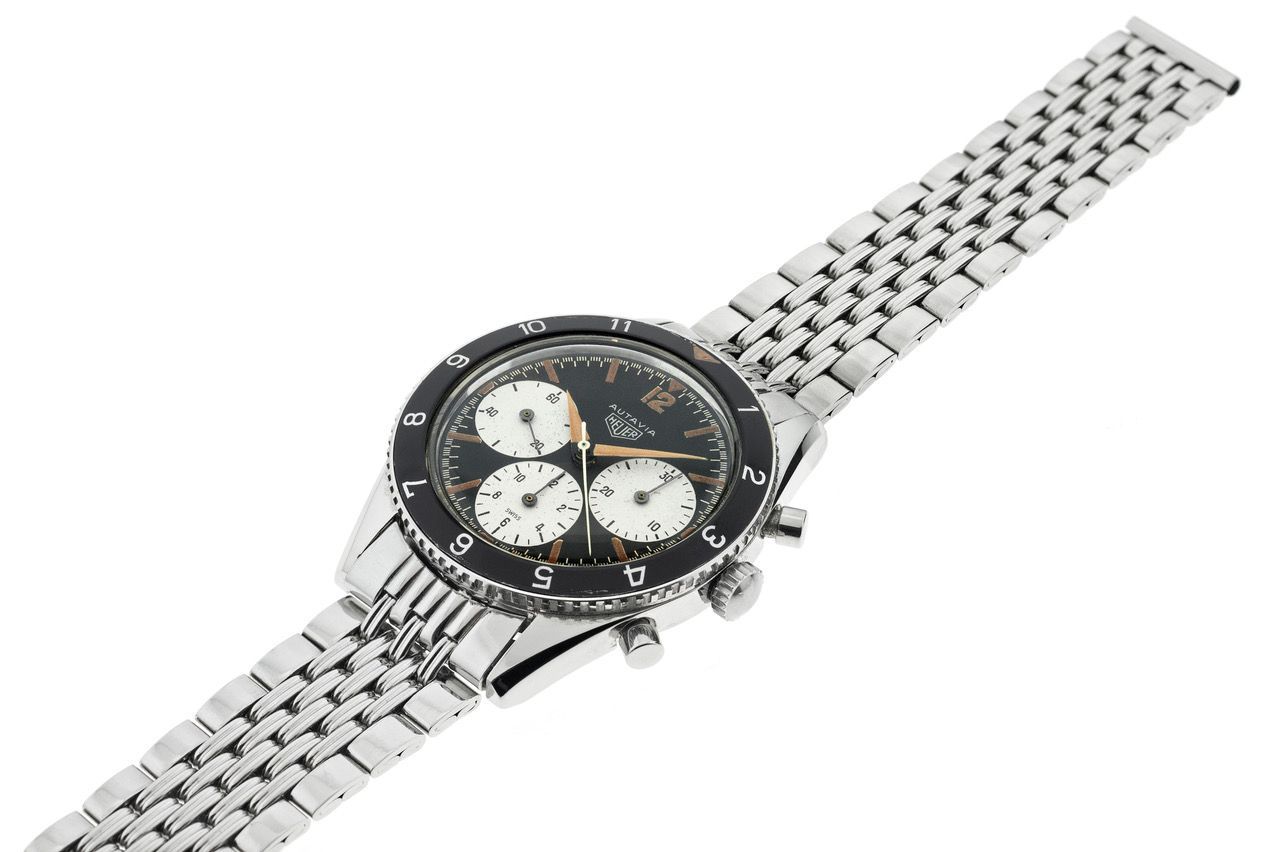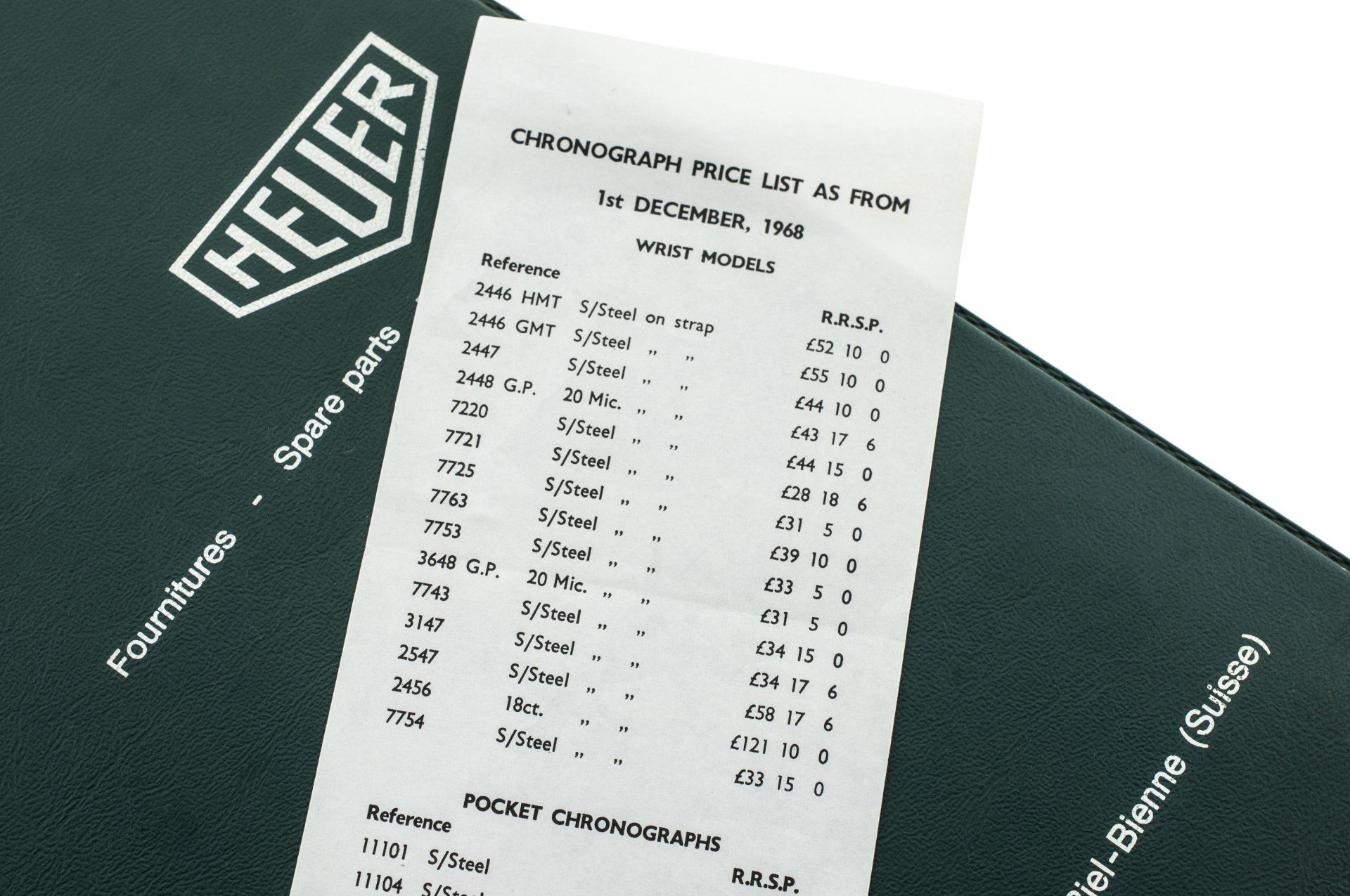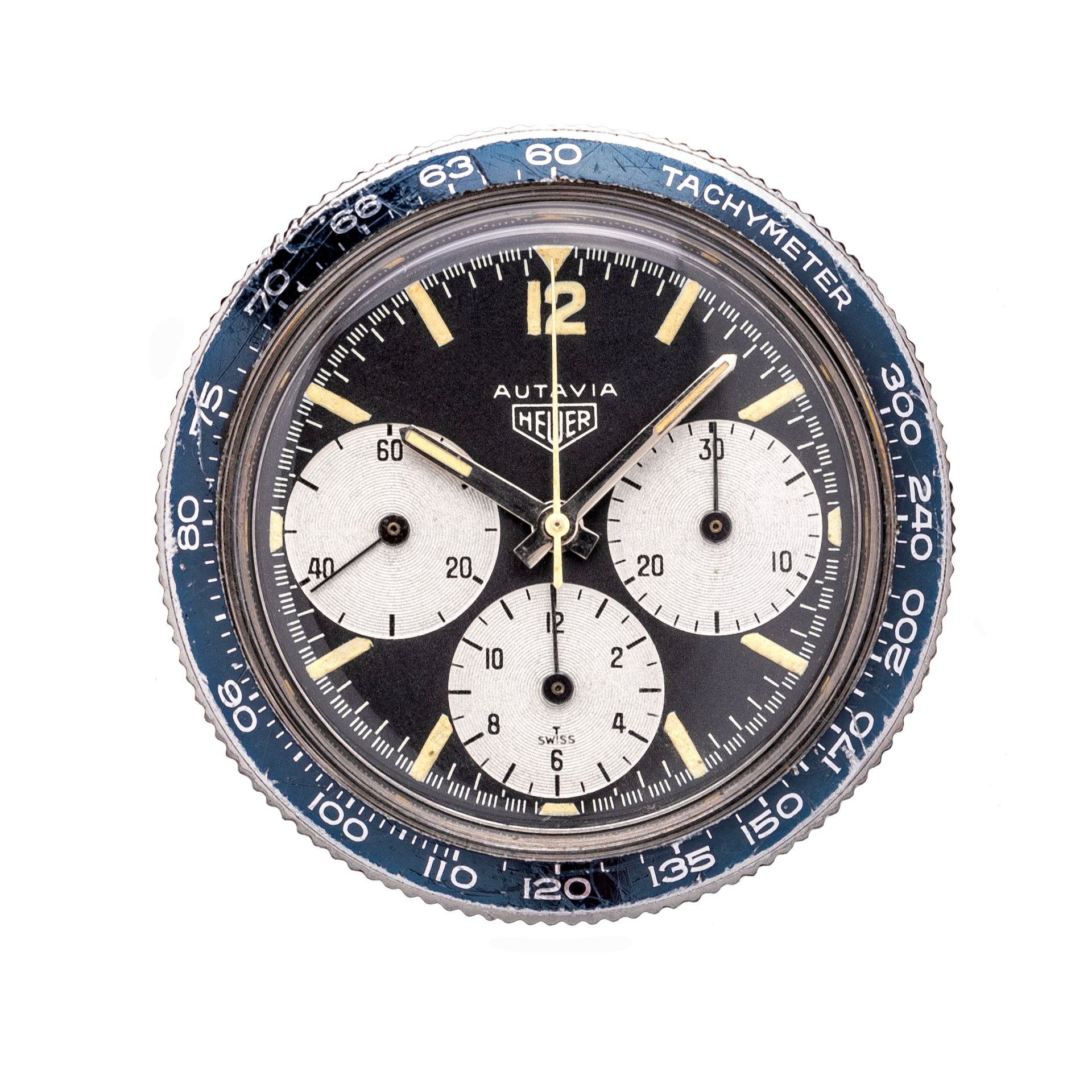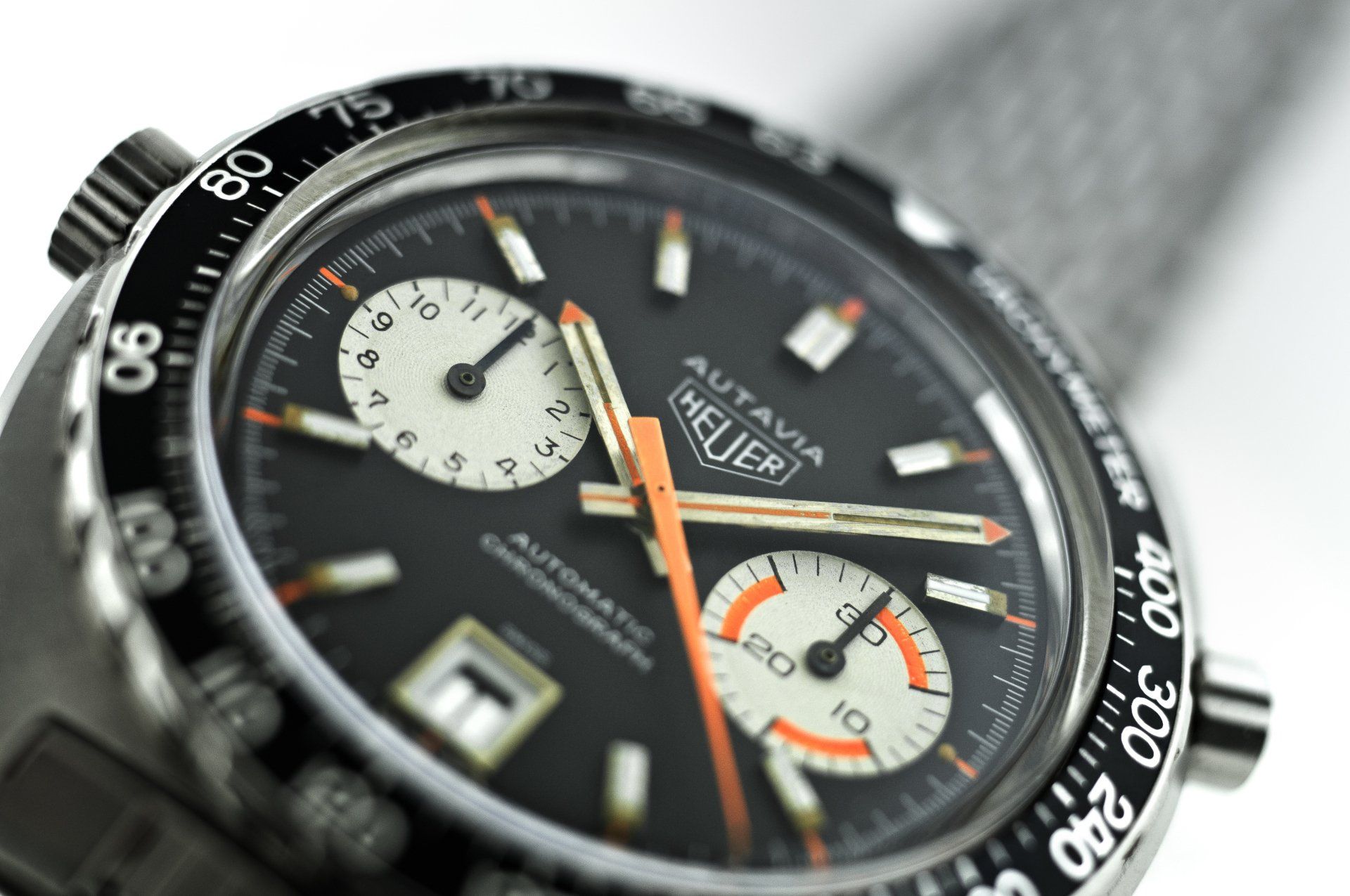The Chronomatic 1133B Monaco
Never mind what someone may pay for one of the Monacos worn or gifted via the Le Mans film set, in my opinion they have little to do with the collector market. I believe it is the Chronomatic 1133B which is the Holy Grail of all the Monacos...
Back in 1969 Heuer launched some of the world's first automatic chronographs after their Project 99 came to fruition. The era of the automatic Autavia, Carrera and Monaco started here and these watches were initially dubbed "Chronomatic" by Heuer and this name featured prominently on these earliest of dials. The term was an amalgamation of the words chronograph and automatic, a tactic which Heuer successfully used when naming the Autavia back in 1962. However, feedback came to Jack Heuer that their most important market (USA) did not really understand the name and so, after the initial batch of watches, the name was gifted to Breitling and this is the reason these dials are so elusive today. Subsequent automatic Heuers displayed the more usual (and easily understood by the Americans) phrase "Automatic Chronograph".
I have been lucky enough to find a handful of Chronomatic Monacos over the years; one that was truly mint and then four with varying dial conditions, including one "Paintless Wonder" which came from Mexico and had no metallic blue paint left on the dial whatsoever. The metallic blue paint on these early Monacos (that includes the transitional version too) was not effective at dealing with humidity and temperature changes/extremes, which is no doubt why Heuer adopted a matt paint finish on the standard production 1133B later. I actually owned one near mint Chronomatic 1133B Monaco that degraded during my ownership (as did the value!), so if you're one of the few lucky owners to have a mint one, be careful where you store it, perhaps even wrap it in "cotton wool"! As an aside, it is interesting to note that when the metallic paint disappears the white text print remains, and this can make for some cool looking dials.
There are some interesting and specific things to note about these watches, for instance the positioning of the dial text was different to the subsequent editions with Chronomatic appearing above the Heuer shield, and Monaco dropping to above the date window. Also the lume was blue on both the dial and in the squared off plain steel hands which made for a very unique look! Although I found one Transitional Monaco with blue lume some years ago, cream lume was the norm after the Chronomatic 1133B, I assume because it was more legible. Also the very earliest cases appeared with unsigned backs, with no "Heuer Tool No33" engravings on them. The first four serials on my database (pre 157220) share this oddity, such examples are very much the first of the first!
I have seen various estimates over the years about production volume and from an initial "guess" of 50 for each dial a decade or so ago, today my estimate would be "fewer than 250 of each". This maximum estimate is arrived at by looking at the serial ranges involved, numbers known (fewer than 20) and my gut feel for these things. There is a mixture of Chronomatic and Transitional Monacos between 157189 (the earliest Monaco I have recorded) and 157589 but most appear pre 157400. I believe it is better to slightly over estimate than under, but my feeling is that 150-200 is a likely number. This compares to my production estimates of fewer than 700 for the 1133B Transitional and fewer than 2500 for the standard production 1133B "McQueen". The latter is actually quite a high number for Heuer production, showing that the Le Mans campaign and the transatlantic dash to deliver the watches to the film set was worth the effort.
The market for these Chronomatic variants is strong, with fewer than 20 of the Monaco known and fewer than 30 of the remainder (Autavia and Carrera) having been discovered and documented over the past 12 years that I have been collecting and researching Heuer. Of course, the dial is the most important item on a vintage watch and so its condition is critical for the top "mint" valuation band on the Heuer Price Guide. The very best could be worth up to £60,000, conversely one with major dial degradation would be worth considerably less, the attractiveness of the patina affecting value to some degree.
To find out more preview the Heuer Monaco Design Classic book - via the button below - available to order via Blurb. A wealth of knowledge and hi-res photos on all of the vintage production Monacos from 1969 to the end of the 1970s.
Note: Please do not reproduce these images without permission.
